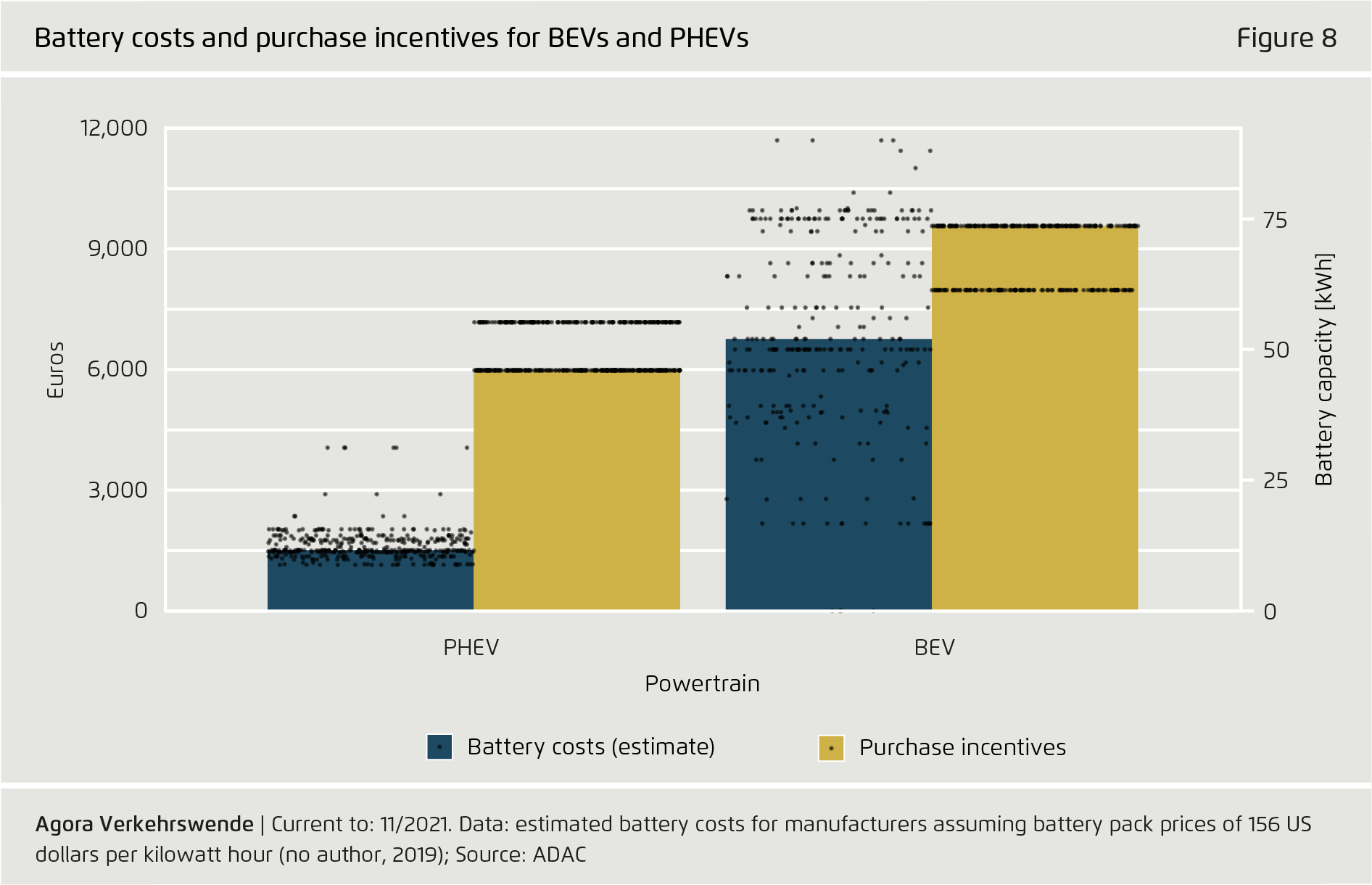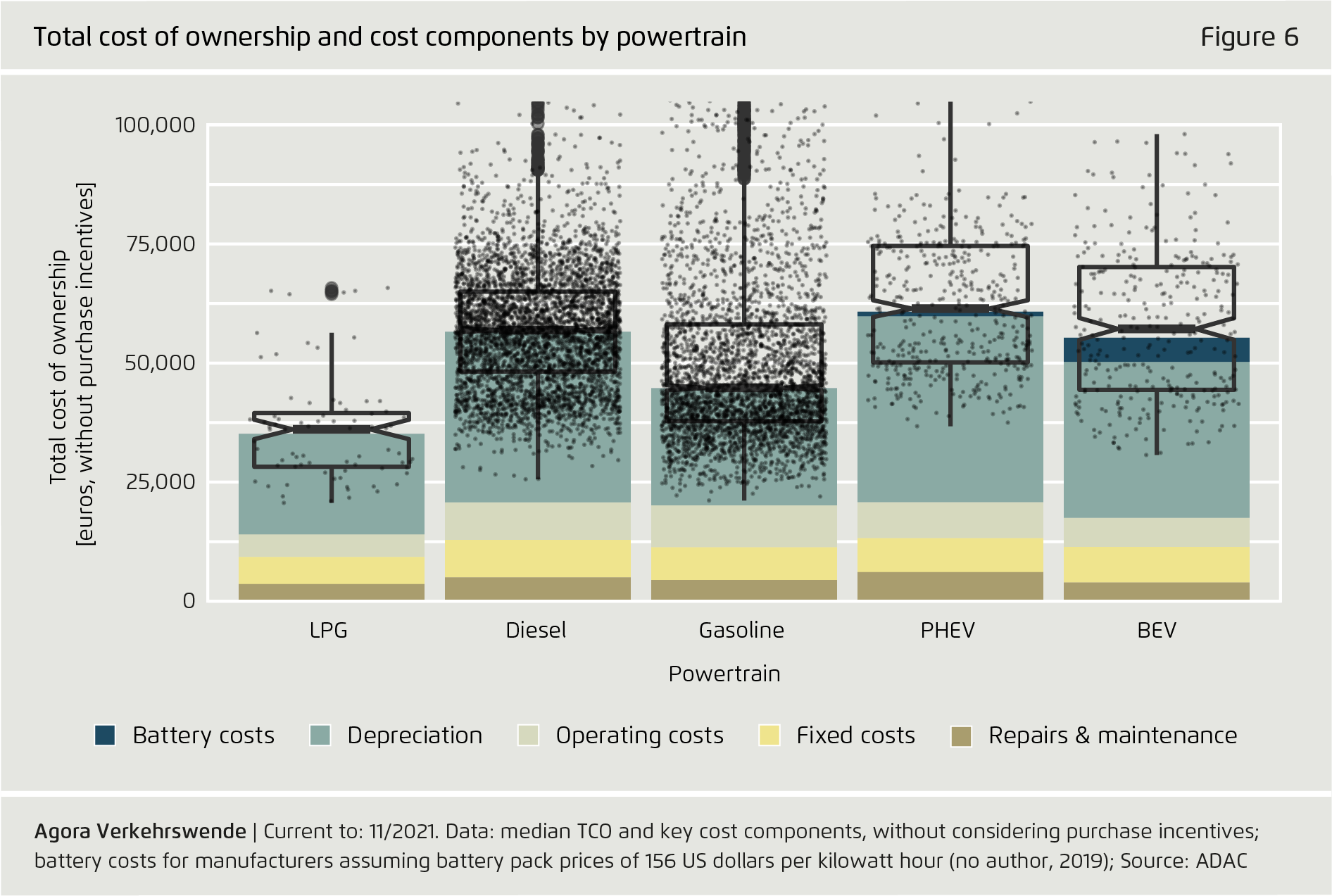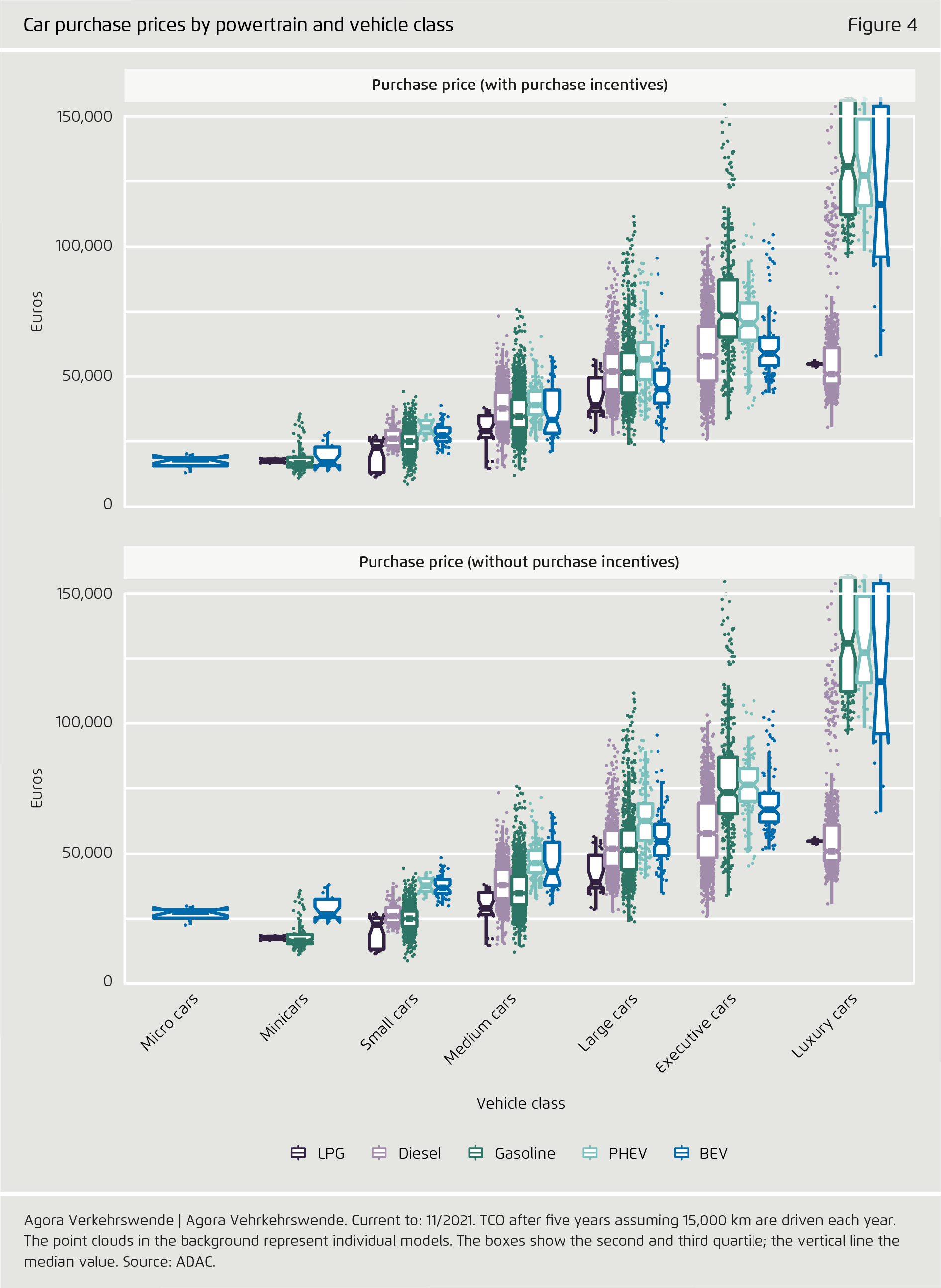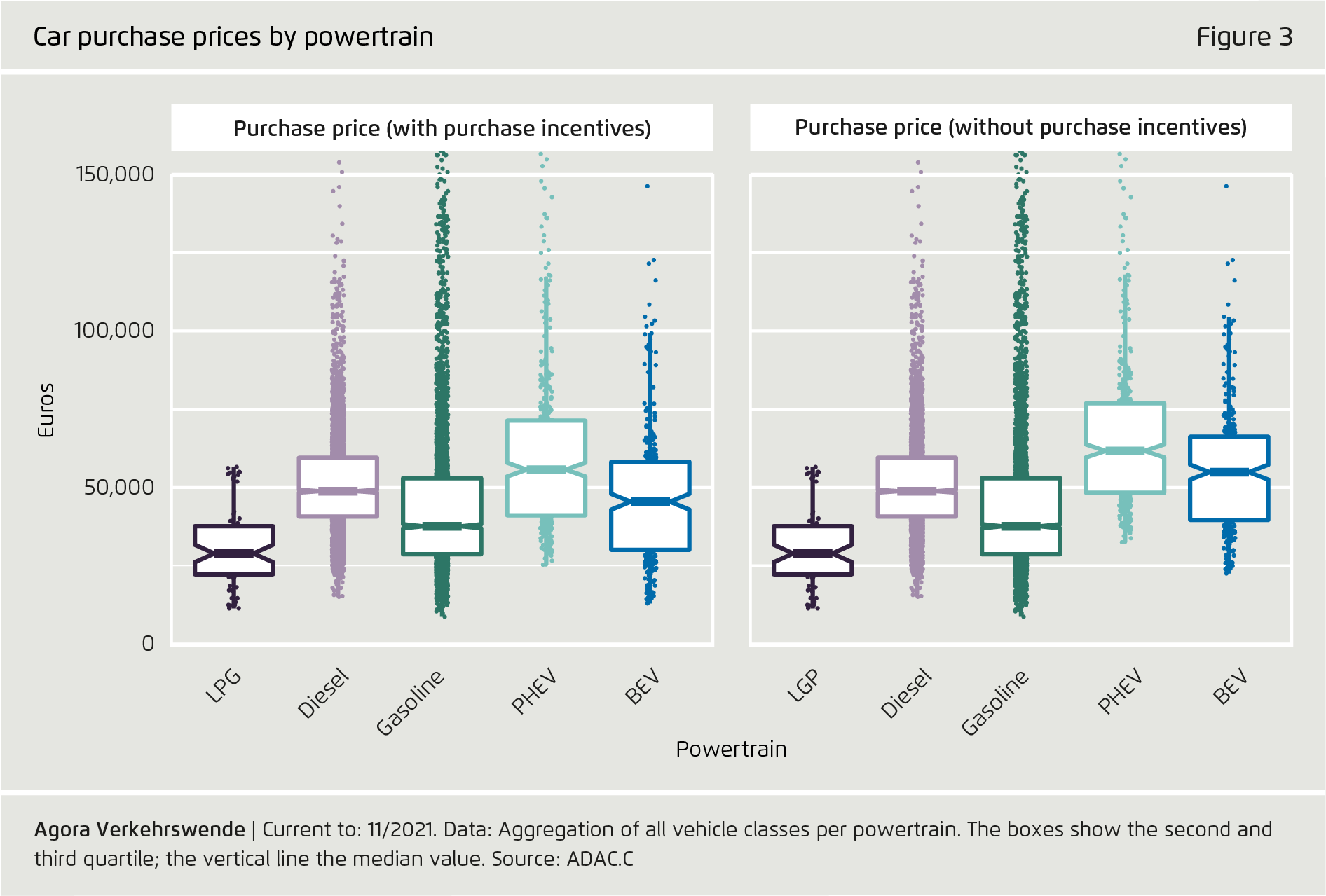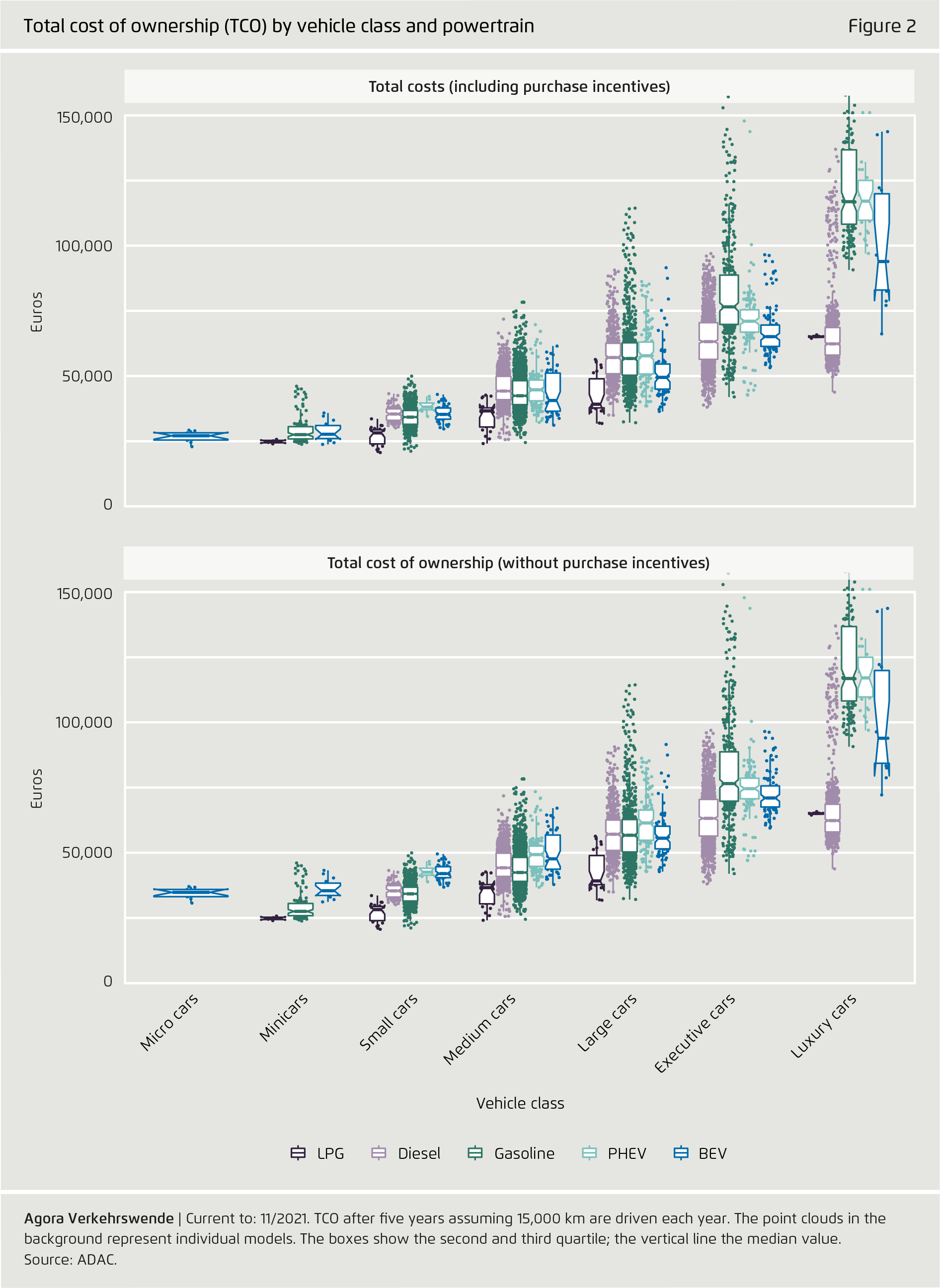-
In terms of total cost of ownership when factoring in subsidies, battery-electric vehicles are already cost competitive with their combustion-engine counterparts.
“Total cost of ownership” includes all costs that accrue from initial purchase to resale, including depreciation, fuel costs, taxes, insurance, and repair and maintenance. A median gasoline model with a standard feature set in the medium size vehicle class (such as a VW Golf), costs just over 42,000 euros to own for a period of five years given initial purchase as a new car. By contrast, a comparable battery-electric vehicle costs just over 40,000 euros, when one takes government purchase incentives into account. Battery-electric vehicles are now available in all vehicle classes. To enable consumers to conduct more accurate cost comparisons while also promoting market transparency, upcoming reforms to the Energy Efficiency Labeling Ordinance should require dealers to prominently display the total cost of vehicle ownership for consumers.
-
Initial purchase prices for battery-electric vehicles are now comparable to that of combustion-engine vehicles thanks to government purchase incentives.
Most gasoline-powered cars cost between 29,000 euros and 53,000 euros to purchase. By way of comparison, battery-electric vehicles cost between 30,000 euros and 58,000 euros , when one takes the government purchase incentives into account (specifically, the Environmental Bonus and Innovation Premium). Since the initial purchase price tends to be the most prominent and salient factor in consumer purchase decisions, policymakers should maintain existing purchase incentives for zero-emission vehicles – only reducing them once the cost gap between electric and combustion-engine vehicles has diminished considerably.
-
In executive and luxury vehicle classes, battery-electric vehicles are already cheaper than their combustion-engine counterparts, even without government purchase incentives – both in terms of initial purchase prices and total cost of ownership.
In the executive class (e.g. BMW 5 series), the median price of a gasoline-powered car is 77,000 euros over the first five years of ownership, while the comparable figure for a battery-electric car in the same class is 71,000 euros. In most cases, purchase premiums do not play a role because only vehicles with a purchase price of less than 65,000 euros are eligible. In the medium, small, mini, and micro vehicle classes, by contrast, electric vehicles are significantly more expensive than comparable combustion-engine vehicles in the absence of subsidies. In order to make battery-electric vehicles available to prospective buyers on a budget, government support measures should be enacted to ease the purchase of smaller vehicle models. In the executive and luxury classes, by contrast, purchase incentives could already be reduced today
-
Plug-in hybrids are the most expensive option in terms of total cost of ownership.
The total cost of ownership for plug-in hybrids without subsidies averages 61,000 euros, compared to 57,000 euros for diesel and non-subsidised battery-electric vehicles. Including government purchase incentives, the median total cost of ownership is around 58,000 euros for a plug-in hybrid and 51,000 euros for a battery-electric vehicle. In addition, their emissions scorecard depends heavily on how they are driven. To ensure that government subsidies actually serve to protect the climate, policymakers should tie PHEV subsidy allocation to vehicle reliance on electrical operation. Specifically, only vehicles that are predominantly driven using electrical energy should be eligible.
-
In the future, government support measures for electric vehicles should also target the used car market.
The analysis undertaken here is only concerned with new vehicle sales, as this is the starting point for their gradual penetration of the national vehicle stock. The purchase behavior of companies who operate vehicle fleets is particularly important for bringing electric vehicles into circulation, as some 64% of new vehicles sales in Germany are to businesses. Further incentives to support electric vehicle adoption in the used car market would be advised. In addition to adopting purchase incentives for used battery-electric vehicles, policymakers could also establish incentives related to cost of use, such as additional taxes on fossil fuels or the stronger orientation of vehicle taxes to emissions. As electricity becomes cheaper in relation to gasoline and diesel, we can expect higher demand for electric vehicles in the used car market.
This content is also available in: German
The Bottom Line of Electric Cars
Comparing the Cost of Ownership of Electric and Combustion-Engine Vehicles
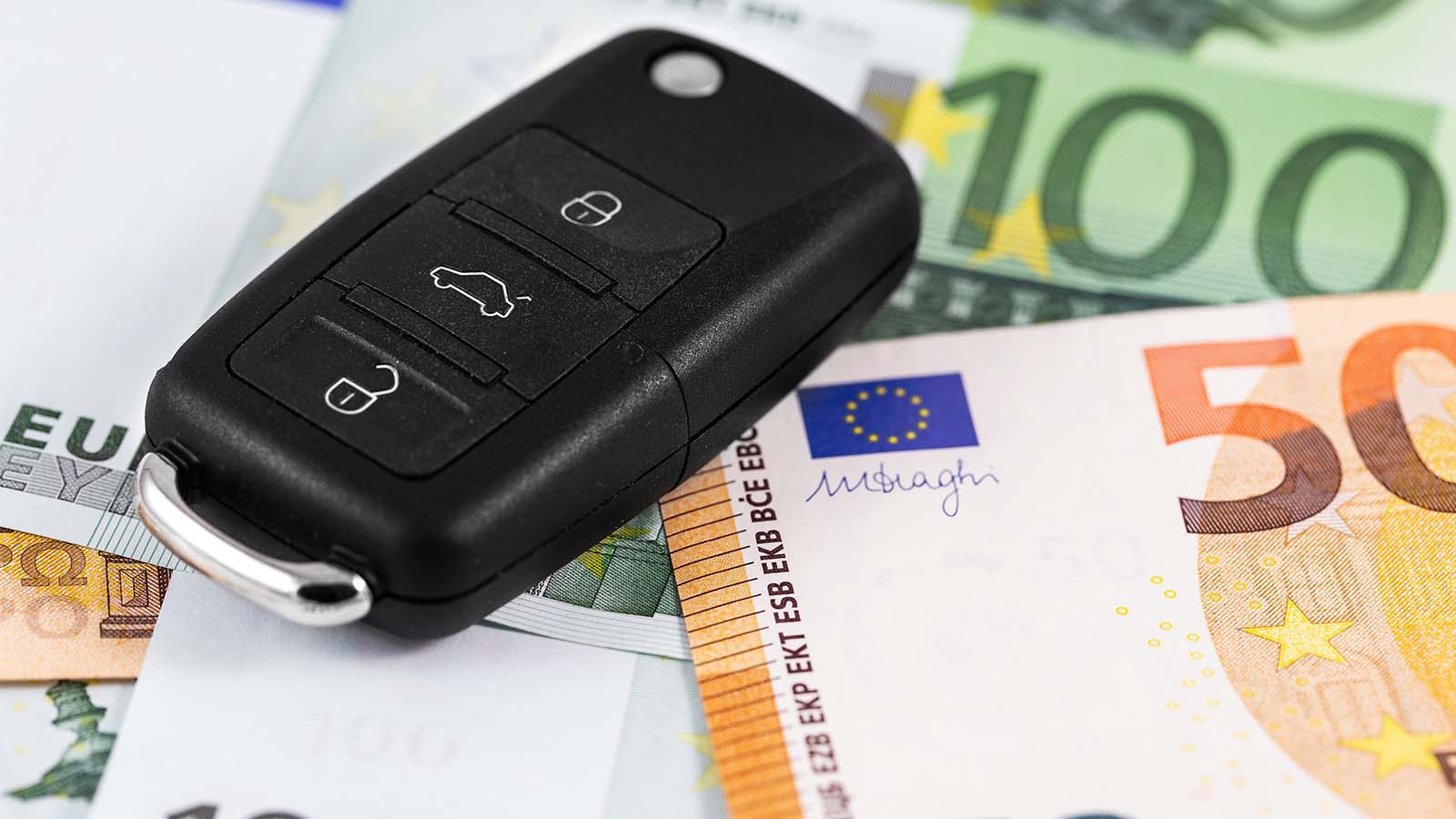
Preface
Beyond initial purchase costs, anyone who wants to buy a car must also consider running costs, including fuel, maintenance, insurance, and taxes. Yet another factor is the vehicle’s depreciation over time. The true cost of vehicle ownership includes both of these cost elements – that is, initial purchase costs, plus costs that accrue during the ownership period, minus the subsequent resale value. While commercial vehicle fleet operators – who have a major influence on the new car market – are already taking running costs into account, households tend to overlook this issue.
How do electric vehicles stack up against their conventional counterparts in terms of total cost of ownership for consumers? To answer this question, we consulted the Car Cost Calculator of the German automobile club ADAC, a free online database that contains comprehensive cost data. The database covers all of the more than 8,000 models currently available in Germany. Our analysis provides insight into the current cost competitiveness of electric vehicles in the German market. We also spotlight the effectiveness of current incentive measures – and how they can be further developed to support the uptake of electric vehicles. The most important insight is that in many instances, electric vehicles are already a cost-competitive alternative.
Key findings
Bibliographical data
Downloads
-
pdf 4 MB
The Bottom Line of Electric Cars
Comparing the Cost of Ownership of Electric and Combustion-Engine Vehicles
All figures in this publication
Breakdown of total cost of vehicle ownership
From The Bottom Line of Electric Cars on page 1
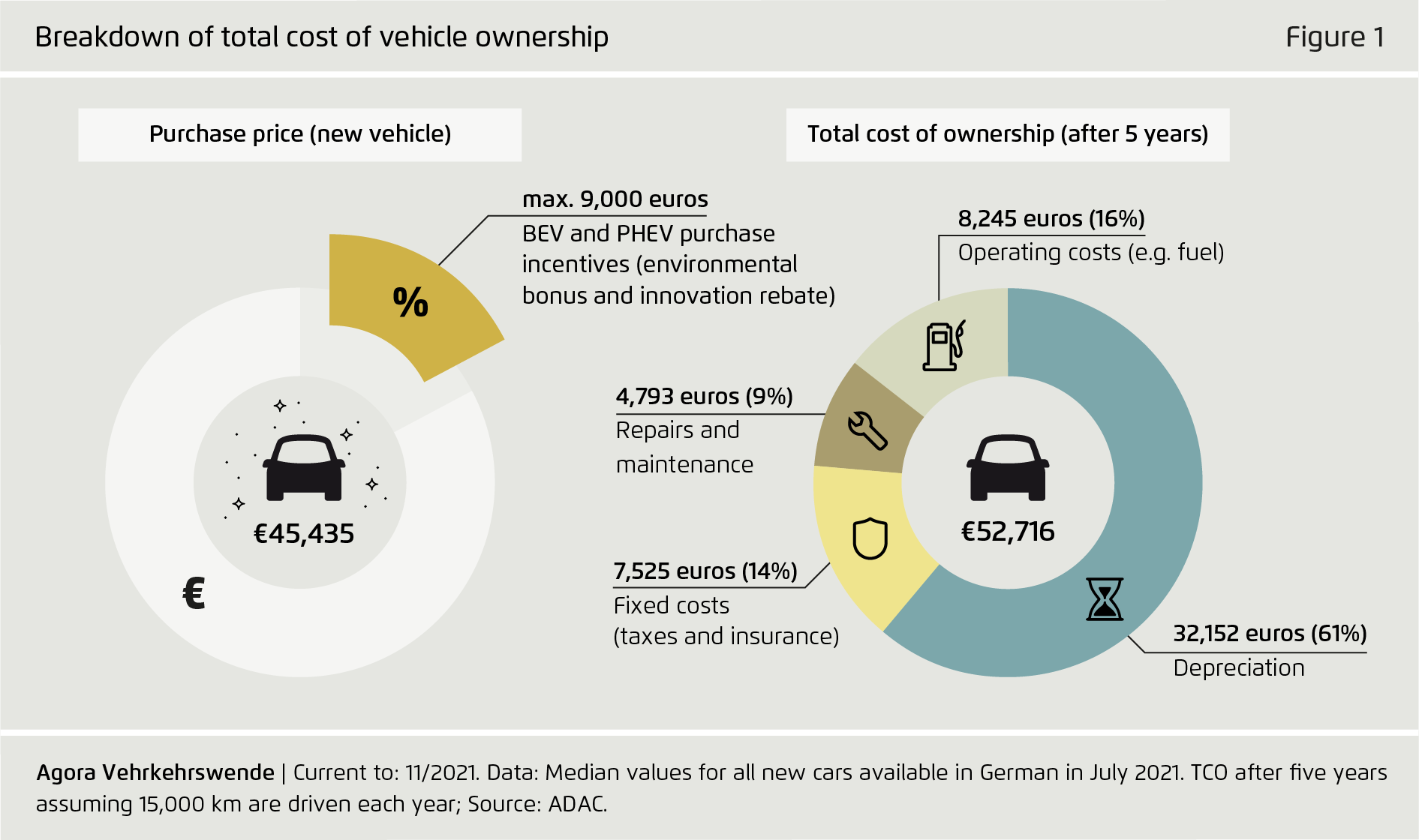
BEV and PHEV battery capacities
From The Bottom Line of Electric Cars on page 9


